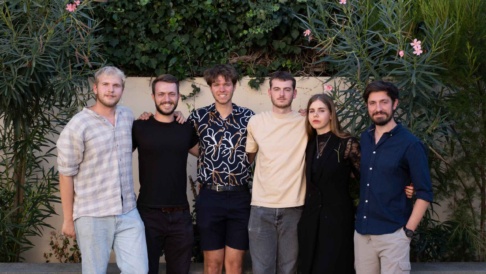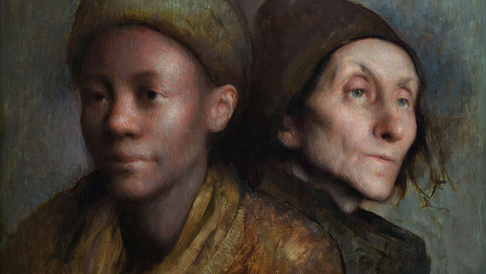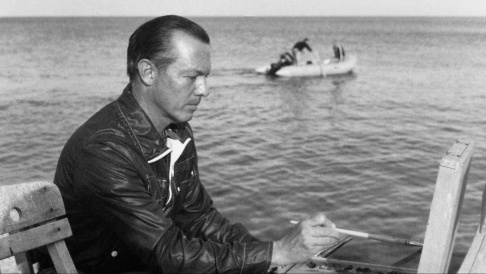Drawing
Speed, Harold. The Practice and Science of Drawing. New York, Dover, 1972.
The best book available on drawing. Speed explains some of the principles taught at the FAA.
Cole, Rex Vicat. Perspective for the Artist. New York: Dover, 1976. A clear introduction to perspective by a master teacher.
Boisbaudran, LeCoq. Training the Memory in Art & the Education of the Artist. London: Macmillan,1911.
 Teacher of Rodin and Whistler. To be used with Daniel Gravesâ memory exercises.
Vanderpoel, John. The Human Figure. New York: Dover, 1958. Turn of the century teacher in Chicago. Beautiful drawings, long-winded prose.
Hale, Robert. Drawing Lessons from the Great Masters. New York: Watson-Guptill,1964.
 Relates anatomy to drawing and teaches how to draw from imagination.
Composition
Pearce, Cyril. Composition: An Analysis of the Principles of Pictorial Design. London: Barsford, 1927. The best book available on composition. Clear discussion of line, value and color.
Poore, Henry R. Pictorial Composition & the Critical Judgment of Pictures. New York: Putnam, 1903. A classic. Get the original not the Dover reprint, as much as been changed for the worse.
Payne, Edgar, The Composition of Outdoor Painting. Bellflower, CA.: DeRuâs Fine Arts, 2006.
Applies Pooreâs principles to landscape. Just reprinted.
Blanc, Charles. The Grammar of Painting and Engraving. Trans. Kate Doggett. Chicago: Griggs, 1879.
This book explains why visual ideas and the principles of design are so important.
Dow, Arthur W. Pictorial Composition. Berkeley: UC Press, 1997. A turn of the century NYC teacher influence by the aesthetic movement and Japanese art.
Anatomy
Richer, Paul. Artistic Anatomy (R. Hale. Trans.). New York: Watson-Guptill, 1971. French academy instructor. The classic text on artistic anatomy.
Peck, Stephen. Atlas of Human Anatomy for the Artist. New York: Oxford, 1982. Clear explanations, good drawings and diagrams.
Goldfinger, Eliot. Human Anatomy for Artists: The Elements of Form. New York: Oxford, 1991.
 Full of information. Excellent photos showing the muscles in living models.
Perard, Victor. Anatomy and Drawing. New York: Dover, 2004.
Relates anatomy to the moving figure with usefully ecroche drawings.
Painting
Stevenson, R.A.M. Velasquez. London: G. Bell and Sons, 1899.
Sargent called this the best book on painting. Explains the method of seeing taught at the FAA.
Speed, Harold. Oil Painting Techniques and Materials. New York: Dover, 1987.
Almost as good as his drawing book. Excellent demonstrations.
Solomon, Solomon R., The Practice of Oil Painting. London: Seeley, 1911.
English teacher trained in France. Explains what we can learn from copying the masters.
Harrison, Birge. Landscape Painting. New York: Scribners, 1909.
Teacher at the Art Students Leagure and tonalist. Best book on landscape painting.
Charteriers, Evan. John Sargent. New York: Scribners, 1927. Quotes from Sargent on his painting method. Describes FAAâs approach to direct painting.
Quiet Magic: The Still Lives of Emil Carlson. New York: Vance Jordan Fine Art, 1997. Carlsonâs aesthetic has deeply influenced the FAA.
Gammell, R.H. Ives. The Twighlight of Painting, The Boston School: 1900-1930, The Shop Talk of Degas Gammel passed on the tradition of sight-size. His opinionated work is a must-read.
Schmid, Richard. Alla Prima. South Burlington, VT: Stove Praire Press, 1998.
 A helpful problem-solving book by a skillful contemporary realist.
Brown, Jonathan. Velasquez: Technique of Genius. New Haven: Yale, 1998. âAfter Velazquez, none of us are painters.â âManet on visiting the Prado.
van de Wetering, Ernst. Rembrandt: The Painter at Work. Amsterdam: AUP, 1997.
Analysis of the great master, but does any really know how Rembrandt painted?
Wheelock, Arthur K., Vermeer and the Art of Painting. New Haven: Yale, 1995. A close look at the king of color and composition by the Director of the National Gallery.
Sculpture
Bodem, Robert. Drawing in Space: A Manual for Figurative Sculpture. Florence: FAA, 2004. If you have any questions, you can always ask Rob to clarify.
Lanteri, Edward. Modelling and Sculpting the Human Figure. New York: Dover, 1985.
 A student of Rodin. The best book available on sculpture, after Robâs manual.
Clark, Kenneth. The Nude: A Study in Ideal Form. Princeton: PUP, 1972.
Shows the importance of sculpture for the development of painting.
Art History/ Aesthetics
Reynolds, Sir Joshua. Discourses on Art. London: Yale University Press, 1997.
If you read only one book on the philosophy of art, make it Reynolds.
Vasari, Giorgio. The Lives of the Artists. London: Penguin Books, 1965.
Hear the legends of Michelangelo and Titian as told by their contemporary.
daVinci,. Leonardo. Â Notebooks, vols. I ,II. New York: Dover, 1970.
Enter the mind of the quintessential Renaissance man.
Weinberg, Barbara. The Lure of Paris: 19th Century American Painters and Their French Teachers. New York: Abbeville,1991.
Interesting parallels to the 20th Americans in Florence. Gombrich, Ernst. The Story of Art. A good survey of art history.
Painting Materials and Techniques
The FAA Painting Manual.
 Excellent discussion of pigments.
Mayer, Ralph. The Artistâs Handbook. New York: Viking Penguin, 1991.
Best book on Materials.
Eastlake, Charles. Methods and Materials of Painting of the Great Schools and Maters Vol. I & II. Dover. Discusses different approaches to painting. Top of Richard Lackâs list.
Massey, Robert. Formulas for Painters. New York: Watson-Guptill, 1988.
More possibilities for painting mediums than youâll ever use.
Beer, Nicholas. Sight-Size Portraiture. Crowood Press, 2011.



